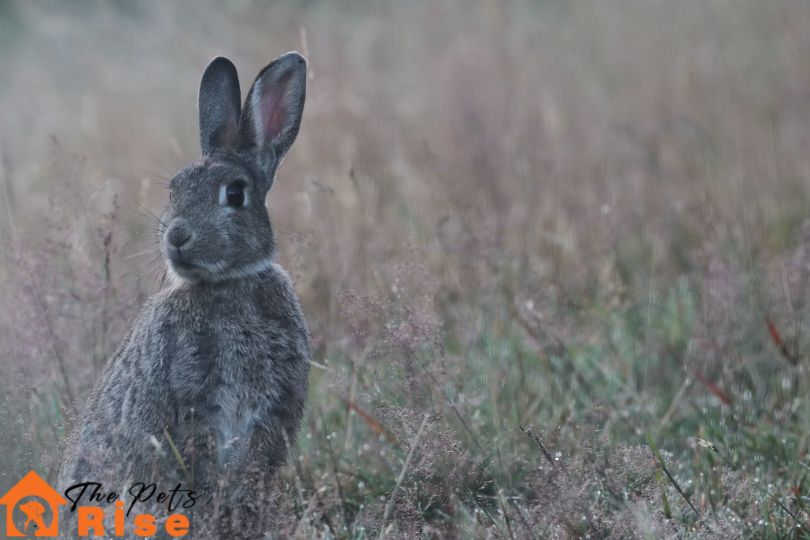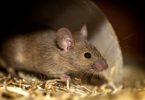When it comes to making your house bunny proof then the pet rabbit owner often wonders if their house is already good enough for their rabbits or if they have a backyard so why do they need to do it? Well, for several reasons a bunny proof house will be the best way to provide an environment that is safer for the rabbits. Now you will be thinking about how to bunny proof your house.
In this comprehensive guide on rabbit-proofing your home and ensuring a safe environment for your beloved furry friend. As dedicated pet lovers ourselves, we understand the importance of creating a space where your rabbit can roam freely without any hazards. In this article, we will provide you with a detailed overview of essential tips, strategies, and precautions to safeguard your home and keep your rabbit out of harm’s way.
Why A Bunny Proof House Is Good For Bunnies?
Creating a bunny proof house is not just about protecting your belongings and maintaining a tidy living space; it’s also crucial for the health and well-being of your furry friend. Rabbits are naturally inquisitive creatures with a penchant for exploring and chewing on objects. By implementing bunny-proofing measures, you provide a safe and enriching environment that promotes their physical and mental health. Here are some key reasons why a bunny proof house is good for bunnies:
Preventing Accidents and Injuries
Rabbits have a natural tendency to chew on anything they come across, including electrical cords, furniture, carpets, and even toxic plants. By bunny proofing carpet, plants, and other belongings around your house, you minimize the risk of accidents and injuries that can occur from chewing on hazardous objects. Securing electrical cords, using cord protectors, and providing appropriate chew toys can help redirect your bunny’s chewing behavior to safe alternatives.
Protecting Your Bunny’s Digestive System
The digestive system of rabbits is delicate and highly sensitive. Ingesting inappropriate objects can lead to serious health issues, such as intestinal blockages or gastrointestinal stasis. Even if you understand what to feed your rabbits, rabbit proofing house ensures that your bunny is not exposed to small objects, loose wires, or toxic plants that can be harmful when ingested. By removing potential hazards, you promote a healthy and functional digestive system for your bunny.
Stimulating Mental Stimulation and Exercise
A bunny proof house goes beyond just removing dangers; it also involves creating a stimulating and enriching environment for your rabbit. By providing ample space for your bunny to explore and play, you encourage physical exercise and mental stimulation. Setting up designated play areas with tunnels, toys, and safe hiding spots can keep your bunny engaged and prevent boredom or behavioral issues.
Fostering a Bonding Experience
A bunny-proof house allows you to spend quality time with your bunny, strengthening the bond between you and your pet. When your house is safe and secure, you can let your bunny roam freely and interact with them without constant worry. This freedom to explore and engage with their surroundings in a supervised environment helps build trust and nurtures a closer relationship between you and your bunny.
Promoting a Stress-Free Environment
Rabbits are sensitive animals that can easily become stressed in chaotic or unsafe environments. With rabbit proofing house process, you create a calm and stress-free space for your bunny to thrive. Removing potential dangers, minimizing loud noises, and providing a consistent routine all contribute to a sense of security and well-being for your furry companion.
Supporting Natural Behaviors
A bunny proof house allows your bunny to indulge in its natural instincts without risking its safety. Rabbits have a need to chew, dig, and explore, and a bunny-proofed house provides outlets for these behaviors in a controlled manner. By providing appropriate chew toys, digging boxes, and tunnels, you satisfy these innate needs, promoting a happy and fulfilled bunny.
In other words, a bunny proof house is essential for the overall health, safety, and happiness of your bunny. By implementing bunny-proofing measures, you create an environment that prevents accidents, protects your bunny’s digestive system, stimulates their mind and body, fosters bonding, reduces stress, and supports their natural behaviors. Investing time and effort in bunny-proofing your house will result in a harmonious living space where you and your bunny can enjoy a wonderful companionship for years to come.
Understanding Your Rabbit’s Natural Instincts
Before we delve into the specific steps for rabbit-proofing your home, it’s crucial to understand your pet’s natural instincts and behaviors. By doing so, you can anticipate potential trouble areas and proactively address them.
Rabbits are curious creatures and love to explore their surroundings. They are prone to chew on objects to keep their teeth worn down. Additionally, rabbits are notorious for their agility and ability to squeeze through small spaces. Keeping these characteristics in mind, let’s move to understanding how to bunny proof your house.
Step 1: Secure Your Electrical Cords
One of the primary concerns when you are making your house bunny proof is to secure electrical cords. Rabbits are attracted to cords due to their texture and the opportunity to chew on them. Not only can this be dangerous for your rabbit, but it can also result in severe electrical hazards. To prevent any accidents, follow these steps:
-
Cover cords with cord protectors
Utilize cord protectors or spiral cable wrap to encase your electrical cords. This adds a layer of protection and makes it less appealing for your rabbit to chew on them.
-
Tuck cords away
Keep cords out of your rabbit’s reach by tucking them behind furniture or using cord clips to secure them to the wall.
Step 2: Remove Toxic Plants
When you are thinking about how to bunny proof your house then don’t forget to take care of indoor plants. They can be a beautiful addition to your home, but some common varieties are toxic to rabbits if ingested. To ensure the well-being of your furry friend, identify and remove any toxic plants from your living spaces. Here are a few examples of popular plants that can pose a threat to your rabbit:
-
Lilies
Lilies are highly toxic to rabbits and can cause severe health issues, including kidney failure.
-
Aloe Vera
Although beneficial for humans, aloe vera can be harmful to rabbits if ingested.
-
Ivy
Certain types of ivy contain toxins that can cause digestive problems in rabbits.
Step 3: Protect Your Furniture and Belongings
Rabbits love to explore and often treat your furniture, carpets, and belongings as their personal chew toys. To preserve your cherished items and bunny proofing carpet to prevent any potential harm to your rabbit, follow these suggestions:
Provide suitable chewing alternatives
Offer a variety of rabbit-safe chew toys, such as wooden blocks or untreated wicker baskets. This provides an outlet for your rabbit’s chewing instincts and helps redirect their attention away from your furniture.
Cover furniture corners
Use corner guards or protective coverings to shield furniture corners, preventing rabbits from nibbling on them.
Apply bitter sprays
Consider using pet-safe bitter sprays or deterrents on furniture and belongings to discourage your rabbit from chewing on them.
Step 4: Secure Hazardous Areas
A bunny proof house should have prohibited access to certain areas of your home that may pose potential dangers to your rabbit. By securing these hazardous zones, you can create a safer environment for your pet. Here are some precautions to take:
Block access to electrical outlets
Install outlet covers or use baby-proofing outlet plugs to prevent your rabbit from getting injured or causing electrical accidents.
Secure doors and cabinets
Rabbits are known to escape artists. So a bunny proof house should have secure doors and cabinets to prevent them from wandering into dangerous areas or ingesting harmful substances.
Use baby gates or barriers
Consider using baby gates or barriers to confine your rabbit to specific areas of your home, especially when you’re unable to supervise them closely.
Step 5: Remove Small Items and Choking Hazards
Rabbits are naturally curious and may nibble on small objects, which can lead to choking or digestive obstructions. To eliminate these risks, follow these guidelines:
Keep small objects out of reach
Remove small items such as buttons, coins, or craft supplies from your rabbit’s vicinity.
Secure loose wires or cords
Bundle and secure any loose wires or cords that could potentially be nibbled on and swallowed.
Pick up clutter
Regularly declutter and keep your floors free from small objects that could be hazardous if ingested.
Conclusion
By following the comprehensive guidelines outlined in this article, you can create a safe and rabbit-proof environment for your beloved pet. With rabbit proofing house process, you can address potential hazards, secure electrical cords, remove toxic plants, protect your furniture, and secure any hazardous areas. With these precautions in place, you can provide your rabbit with a comfortable and secure home, promoting their health and well-being.
Please note that while these recommendations cover a broad range of rabbit-proofing measures, it’s important to assess your specific living space and tailor these strategies accordingly to take good care of rabbits. With your dedication and our expert guidance, you can create an environment that ensures your rabbit’s safety, happiness, and overall well-being. Read our more pet care tips and guides to be a good pet owner.







